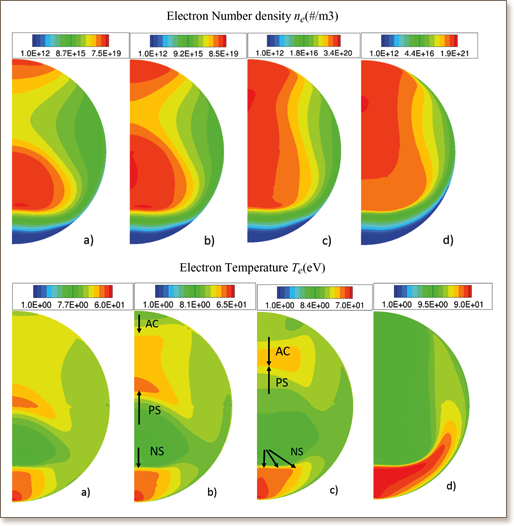

A. Sharma, D. Levko, L. L. Raja, M. S. Cha
Journal of Physics D: Applied Physics, 49 (39), 395205, (2016)

We perform computational studies of nanosecond streamer discharges generated in helium bubbles immersed in distilled water under atmospheric pressure conditions. The model takes into account the presence of water vapor in the gas bubble for an accurate description of the discharge kinetics. We find that the dynamic characteristics of the streamer discharge are different at low and high positive trigger voltages with the axial streamer evolution dominant for low voltages and a surface hugging mode favored for high voltages. We also find a substantial difference in initiation, transition and evolution stages of discharge for positive and negative trigger voltages with the volumetric distribution of species in the streamer channel much more uniform for negative trigger voltages on account of the presence of multiple streamers. We observe that the presence of water vapor does not affect the breakdown voltage even for oversaturated conditions but significantly influences the composition of dominant species in the trail of the streamer as well as the flux of the dominant species on the bubble surface.